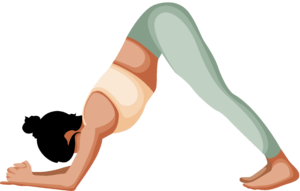Dolphin (Ardha Pincha Mayurasana)
Pose Overview
| Common Name | Dolphin |
| Traditional Sanskrit Name | Ardha Pincha Mayurasana |
| Sanskrit Name Pronunciation | AHR-dah PIN-chah my-yoor-AHS-uh-nuh |
| Pose Difficulty | Intermediate |
| Drishti
Drishti is the gaze or visual focus point during yoga poses.
Learn more about Drishti |
Navel or between the legs |
Dolphin Pose, also known as Ardha Pincha Mayurasana, is a challenging arm balance that requires strength, flexibility, and balance. It is a variation of Downward-Facing Dog and shares many of the same benefits. The pose gets its name from the shape of the body in the pose, which resembles a dolphin diving into the water. It is a great pose for those looking to build upper body strength and improve their balance.
Benefits of Dolphin
Dolphin pose strengthens the arms, shoulders, wrists and core. It also stretches the spine, legs and arches the feet. It helps to alleviate stress and fatigue, and energizes the body.
How to Enter Dolphin
Begin in a plank position with your hands shoulder-width apart and your fingers spread wide. Lower your elbows to the floor and bring your forearms parallel to each other. Keep your elbows close to your ribcage. Press your hands and forearms into the ground and lift your hips up and back. Keep your legs straight and press the tops of your feet into the mat. Keep your head between your arms, facing the ground.
How to Exit Dolphin
Slowly lower your hips back to the mat and release the pose.
Common Dolphin Modifications & Variations
If you are new to this pose, you can start with dolphin pose with the head on a block, this will help you to build strength in your arms and shoulders.
Common Mistakes with Dolphin
Not engaging your core and letting your hips sag towards the ground. Not keeping your elbows close to your ribcage.
Safety Guidance
Avoid this pose if you have wrist or elbow injury or high blood pressure.

